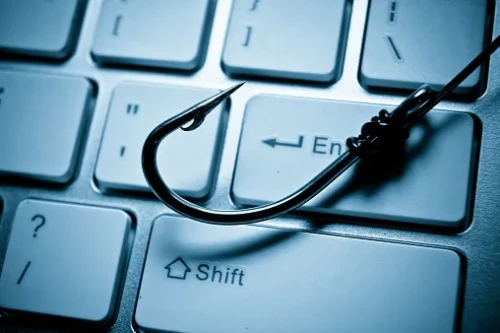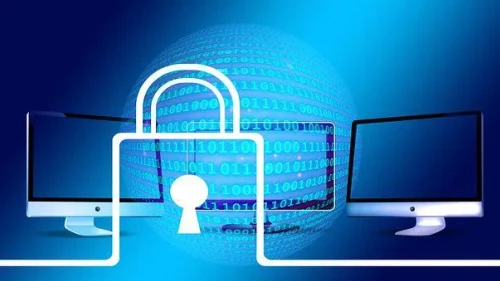Hey there, in today’s digital age, the threat of cyberattacks is more prevalent than ever. One particularly sneaky form of attack that’s been making waves is spear phishing. Unlike traditional phishing that casts a wide net, spear phishing is more targeted and precise.
Let’s dive into the world of spear phishing and explore how cybercriminals use deceptive tactics to trick individuals and organizations. We’ll look at real-life examples of attacks, the consequences of falling victim, and how you can protect yourself against this evolving threat.
Understanding Spear Phishing
 Spear phishing is different from regular phishing in that it’s tailored to specific targets. Cybercriminals put in the effort to research their victims, making the attacks highly personalized and convincing. This makes spear phishing emails harder to detect and resist.
Spear phishing is different from regular phishing in that it’s tailored to specific targets. Cybercriminals put in the effort to research their victims, making the attacks highly personalized and convincing. This makes spear phishing emails harder to detect and resist.
There have been some high-profile cases of spear phishing attacks that have had serious consequences. For example, a financial institution lost sensitive information to attackers posing as customers, leading to financial losses and damage to their reputation. Similarly, a government agency suffered a data breach due to employees clicking on malicious links in targeted emails.
Learn More: Anatomy of a Spear Phishing Attack
Eye-Opening Examples of Spear Phishing Attacks
Let’s take a closer look at some notable examples of spear phishing attacks to understand the risks they pose:
Case Study: Spear Phishing Attack on the Democratic National Committee
 In 2016, the Democratic National Committee fell victim to a spear phishing attack during the U.S. presidential election. Malicious actors tricked key employees into revealing login credentials, leading to a massive data breach that impacted the election campaign.
In 2016, the Democratic National Committee fell victim to a spear phishing attack during the U.S. presidential election. Malicious actors tricked key employees into revealing login credentials, leading to a massive data breach that impacted the election campaign.
Case Study: Spear Phishing Attack on Target Corporation
 In 2013, Target Corporation suffered a data breach due to a spear phishing campaign targeting an HVAC vendor. This breach compromised millions of customer records, highlighting the human element in cybersecurity defenses.
In 2013, Target Corporation suffered a data breach due to a spear phishing campaign targeting an HVAC vendor. This breach compromised millions of customer records, highlighting the human element in cybersecurity defenses.
Exploring the Deceptive Precision of Spear Phishing
 Spear phishing combines psychological manipulation and technical precision to deceive individuals. By personalizing emails and mimicking legitimate communication, cybercriminals create a false sense of trust and credibility. This makes it easier for them to bypass security measures and trick even cautious individuals.
Spear phishing combines psychological manipulation and technical precision to deceive individuals. By personalizing emails and mimicking legitimate communication, cybercriminals create a false sense of trust and credibility. This makes it easier for them to bypass security measures and trick even cautious individuals.
Personalization and targeting are key to spear phishing attacks, as they create a sense of familiarity that lures victims into a false sense of security. Cybercriminals use personalized information, familiar language, and urgency to prompt desired actions while avoiding detection.
The deceptive nature of spear phishing makes it a challenge to detect and prevent. Cybersecurity measures need to evolve to stay ahead of these targeted attacks and protect against them effectively.
How to Protect Against Spear Phishing
Protecting against spear phishing requires a combination of technical solutions, employee training, and best practices. Organizations can use email filtering, multi-factor authentication, and encryption to secure their systems. Regular security audits and updates are also crucial.
Employee awareness is vital in defending against spear phishing. By educating staff on phishing signs, verifying sender identities, and avoiding suspicious links, organizations can empower their employees to recognize and report threats. Simulated phishing exercises can further enhance awareness and readiness.
Stay Informed About Spear Phishing Prevention
 Spear phishing attacks remind us of the constant threat posed by cybercriminals. By learning from real-life examples and understanding how attackers operate, we can strengthen our defenses against these targeted threats. Through technical solutions, education, and vigilance, we can combat spear phishing and protect our digital identities.
Spear phishing attacks remind us of the constant threat posed by cybercriminals. By learning from real-life examples and understanding how attackers operate, we can strengthen our defenses against these targeted threats. Through technical solutions, education, and vigilance, we can combat spear phishing and protect our digital identities.
Keep learning about spear phishing prevention with the resources below:
- Discover an email security solution that prioritizes your relationships and conversations.
- Follow best practices to enhance your email security and defend against cyber threats.
- Stay updated on online safety tips to keep yourself secure.
following sentence:
Original: The weather was so cold that I had to wear two jackets.
Rewritten: It was so cold that I had to wear two jackets to stay warm.



